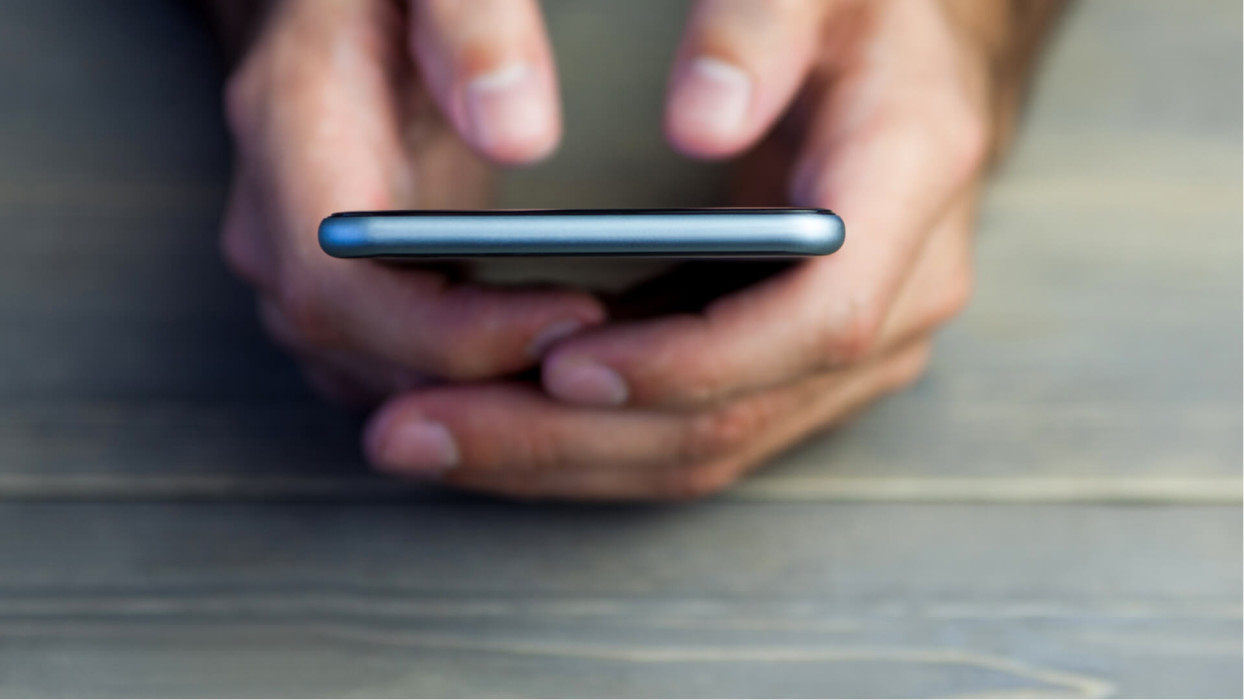From simple passcodes to fingerprint or facial recognition, Android phones offer many ways to lock your screen. But among these options, which one is more secure?

As people become more aware of data privacy and security on their phones, one might think that locking a phone is a basic practice everyone adopts. However, that's far from the truth.According to a report by the Pew Research Center, almost a third of Americans don’t use any kind of screen lock. We gave this some thought recently when discussing how in 2020 to improve the security of your phone.
This time, we’ll dig a little deeper and look into the different authentication methods your Android devices offer.
Pattern Lock
A pattern lock involves tracing a specific shape on the screen to unlock the device. This method is considered to offer only a medium level of security. The pattern you draw could be as simple as the letter L, or more complex. But the simpler the pattern, the easier it is for someone looking over your shoulder to copy it.
Research has shown that observers successfully remembered and recreated a swipe pattern up to 64.2% of the time after just one glance, and this risk increases with multiple observations. You can improve security by turning off the "feedback lines" when drawing the pattern and choosing a more complex shape. However, overall, a PIN or a text-based password is still considered safer.
PIN / Password
If you've already set up any protection for your Android phone, you're likely familiar with the PIN or password lock. This is often the code your SIM card asks for when you turn your phone on or off. While many Android versions might let you set a mere four-digit code, if you want your phone to be truly secure, you should set a much longer PIN.
If you want to up your lock game, you should probably opt for a password that incorporates letters, numbers and special characters and make it at least 8 characters long. It may be a bit harder to remember and type out, but in the long run you’ll be glad you played it safe. If you really want to up the ante, you can also turn on the feature to wipe your phone after a number of failed login attempts.
Fingerprint
Fortunately, fingerprint biometric locks are still popular. You might find them in various forms: as a separate button, integrated into a physical button, or even hidden under the phone's screen. The advantage of this method is that a fingerprint lock is considered one of the fastest ways to unlock your phone. Just place your finger on the reader, and your phone unlocks in a fraction of a second.
But is it 100% secure? For the average person, it's unlikely that a malicious actor would go through the extensive process to bypass a biometric lock. However, bypassing a fingerprint lock is not entirely impossible. Fingerprints can be stolen from photos or other sources, then recreated (even with just 2D printing), and used to bypass the lock. In 2017, a security researcher even managed to recreate the fingerprint of Germany's Minister of Defense from high-resolution photographs.
Face scan
This biometric lock does exactly what it says: it scans your face. Although you’d imagine that the process is fairly sophisticated and entails a large number of technological wonders, the truth is it basically relies on your front camera and some software. The camera scans an image of your face and then relies on a facial recognition algorithm to verify your face. The speed of the unlock also depends on your phone and the quality of its front-facing camera.
This measure is not considered very secure, and malicious actors might easily fool it with a photo of your face. In fact, researchers once conducted a test on 110 different smartphones, and the results were not very promising. Generally, having a fingerprint lock combined with a passcode is a much more secure approach.
Brand-specific features
Different brands of smartphones are also putting their takes on biometric security measures by adding special features to bolster the security of their devices. Those range from various levels of face scanning to iris scans. Samsung, for one, has its own version of the iris scan, which is quite simple to set up. It also considers whether you wear glasses or not. The technology uses an infrared LED to illuminate your eyes while a narrow focus camera captures the iris patterns and the smartphone processes that information. Sounds very high-tech, doesn’t it? But is it secure? Well, a team of white hat hackers using a camera with an infrared feature was able to trick the first of Samsung’s phones to offer the feature.
Final verdict
There is a wide variety of lock screen options to choose from. The smartest approach is always to use a combination of methods and not rely on just one. However, arguably the safest option among all is a sufficiently long and complex PIN or password, followed by a fingerprint scan as the second-best. Whatever option you choose, planning ahead is always crucial. Securing your phone today will certainly help you avoid future problems.
Source: https://www.welivesecurity.com/2020/06/05/how-secure-is-your-phone-lock-screen/